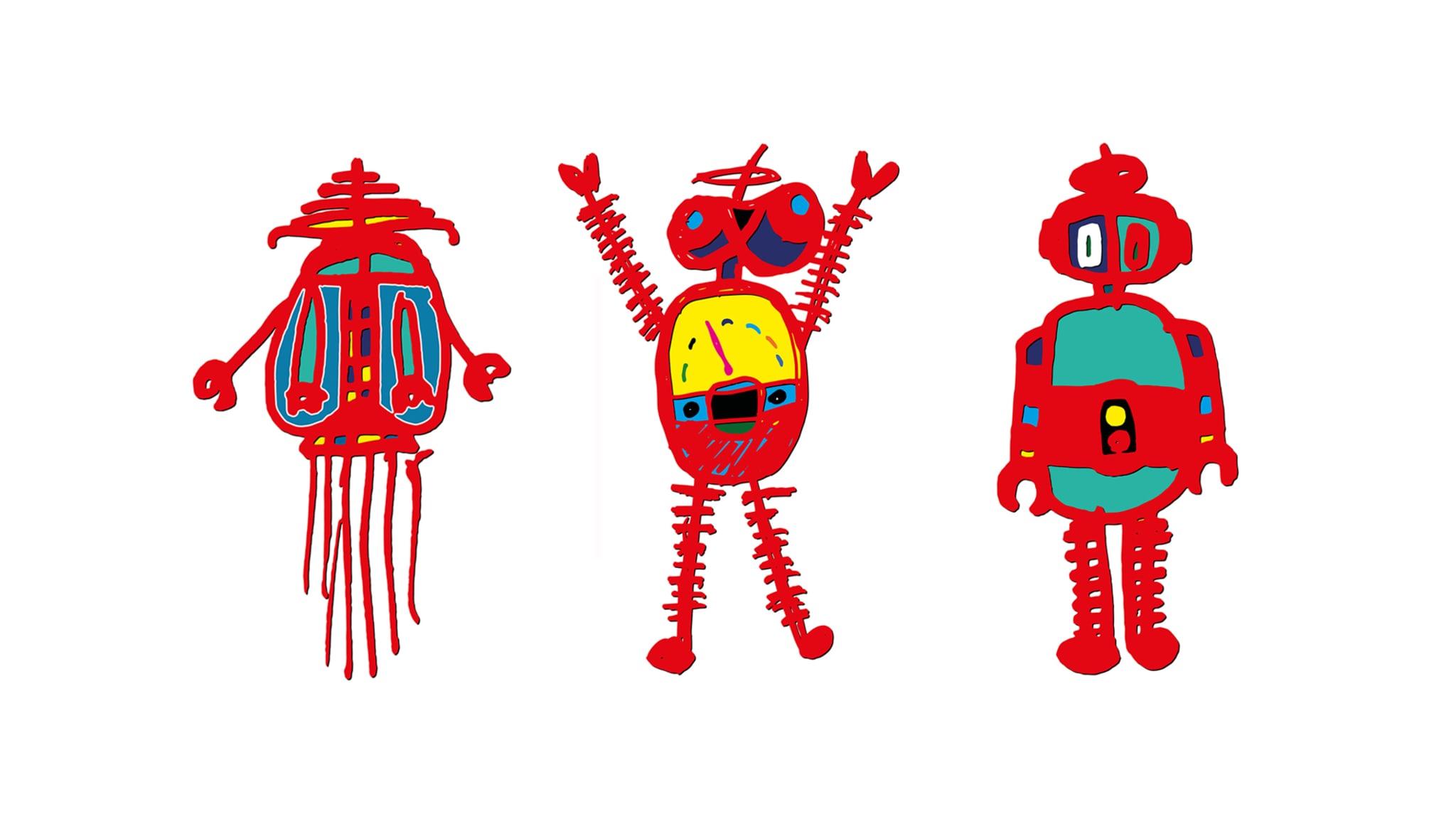
Portrait Of The Artist: Diego Fortunato

As ‘Robobof Saturne’ opens at our Borough Yards shop in London, we spoke to artist Diego Fortunato, known for his lifelong penchant for sketching robots, about how inspiration comes from an irrational place and why he’s not always trying to say the same thing with his work.
There are two types of parents. Those who mutter ‘that’s nice, darling’ when you, at five years old, present them with your latest finger painting. They’ll probably even proudly display it on the fridge, before surreptitiously discarding your masterpiece a few weeks later to make room for your new composition. And then there are those who unfailingly file each and every one of your smudges away, meticulously cataloguing your great works like your own personal archivist. How lucky it was, then, that self-taught artist Diego Fortunato’s father fell into the latter camp.


Exhibits and installations followed, at Christie’s and RHS Chelsea Flower Show, to name but a few (as well as stints as a product designer and Creative Director at Colnaghi and Coll & Cortés Galleries), but it's those robot drawings that are the subject and starting point for his latest endeavour at Paul Smith Borough Yards. Curated to the space, Diego has dreamed up a selection of vibrant, futuristic murals and made a selection of limited-edition prints available for sale in store and online. As Tim Warner-Johnson put it, “Diego Fortunato is an artist and designer known for his ability to alter our perception and pleasure of both space and reality.”
Why did you become an artist?
I think this is one of these questions that lead to the most pompous answers... I believe it's something you are born with, more than something you become.
Why do you work primarily in your medium?
Any medium that can materialize the concept or story I want to tell. I’ve been using “robots” to carve some of my marble and wood pieces (computer numerical control, commonly called CNC) and Laser and water jet to do stainless steel sculptures. I love the use of these technologies.

Where do you find inspiration?
Inspiration can happen mostly when you're not looking for it. It's probably something deeply irrational.
How would you describe your work?
My work is based on stories or concepts, including humour, impossible futuristic theories and social criticism. I try to make people think, sometimes with crazy fantasies like the "Say Yes Absolute Power Spray" installation I did in Christie's Lates.

What do you hope people take away from your art? What are you trying to say?
I'd love that people could have an emotion of any kind, and a bit of happiness, or evasion, at least for a second! I'm not always trying to say the same thing, it varies.
How does being an artist affect your outlook on life?
More than being an artist is my sensibility that can affect my outlook in life, not easy to deal with what's happening in today's world.

What does your typical working day look like?
Marvellous. (Really?)
If you weren’t an artist, what would you do and why?
Oh gosh, this question is so open that I could write a thousand pages, and why? I don't know, do you?
Diego Fortunato
Discover More

Events & Exhibitions
Portrait Of The Artist: Peter Denmark
To mark the opening of a new exhibition of the late artist’s work at Paul Smith Albemarle Street, learn more about his idiosyncratic use of form, colour and composition and why joy is at the heart of Peter’s paintings.
05.22

Events & Exhibitions
Portrait Of The Artist: Roman Lokati
As his latest exhibition, ‘People In The City’, opens at our Borough Yards shop in London, the artist talks to us about getting inspiration from the everyday, making people realise they cannot live without art and how, in another life, he’d be a magician.
05.22
Do you want to keep in touch?

